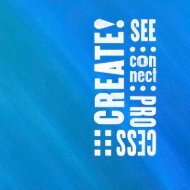Magazine_Spread
You also want an ePaper? Increase the reach of your titles
YUMPU automatically turns print PDFs into web optimized ePapers that Google loves.
52 PRINT
NOVEMBER 2016 53
It changed and
create a new language
of typography whose
elasticity, variability and
freshness of typographical composition
was exclusively dictated
by the inner law of expression and the
optical effect on the composition.
In a digital world where photo manipulation is
dominated by what software can do in seconds,
Lazlo Moholy-Nagy emerges as an analog master
of composition and effects that took days and
weeks to create.
Enlargement, Distortion,
Dropouts, Double Exposures,
and Montage
Moholy-Nagy’s passion for typography
and photography inspired
a Bauhaus interest in visual communications
and led to important experiments
in the unification of these two arts. He saw
graphic design, particularly the poster, as
evolving toward the typophoto. He called
this objective integration of word and
image to communicate a message with
immediacy “the new visual literature”.
Moholy-Nagy’s 1923 Pneumatik poster is
an experimental typophoto. In that year, he
wrote that photography’s objective presentation
of facts could free the viewer form
being dependent on another person’s
interpretation.
He saw photography
influencing poster
design by techniques of enlargement,
distortion, dropouts,
exposures, and montage.
Bauhaus: Pioneers of Graphic Design
Prior to advances made by the Bauhaus, the
field of graphic design did not really exist,
instead advertisers were content to fill a
page with images and text, but they failed
to consider the message that layout can
impart, or the impact that typography can
have on an advertisement as it was considered
secondary to the image used. This
attitude is easily apparent when viewing
print advertisements of the time; they are
typically overstuffed with imagery, contain
unreadable text which is placed as an afterthought,
there is no cohesive, harmonious
feel and little white space visible.
However, with the establishment of the
Printing and Advertising workshop at
Bauhaus, led by former student Herbert
Bayer, a professional studio for graphic
design and commercial art was created,
and its lasting influence helped establish
the field of graphic design and permanently
changed the face of advertising. He wanted
to permanently effect this area.
Moholy-Nagy invented several photographic
processes and was one of the first artists
to realize the potential of photography in
advertising. He worked from the idea that
typography was principally a communications
medium as he believed that it was
“clarity of message most emphatic form.”
The Impact of Laszlo Moholy-Nagy
Moholy-Nagy contributed an important
statement about typography, describing it
as “ a tool of communication.” He stated
that it must be communication in its most
intense form. The Emphasis must be on
absolute clarity and legibility. He added that
communication must never be impaired
by a priori esthetics. Letters must never be
forced into a preconceived framework, for
instance a square.
In Graphic design Moholy-Nagy advocated
an uninhibited use of all linear directions
and the use of all typefaces, typesizes,
geometric forms, colors, etc. He wanted
to create a new language of typography
whose elasticity, variability and freshness of
typographical composition was exclusively
dictated by the inner law of expression and
the optical effect. His theory was that the
essence of art and design was the concept
and not the execution and that the two
could be separated. Gyorgy Kepes is known
as the founder of the Center for Advanced
Visual Studies at the Massachusetts Institute
of Technology.






